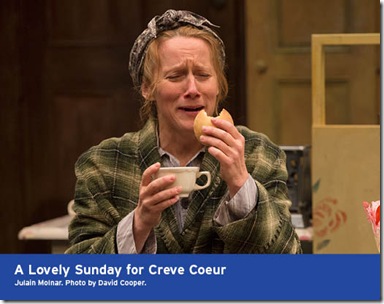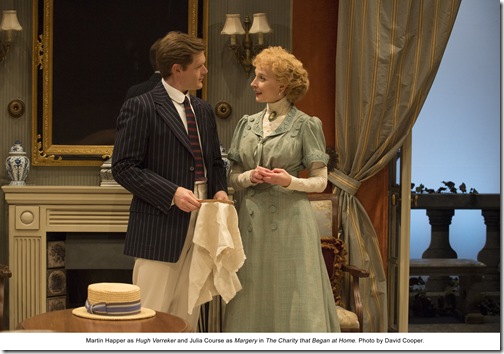A Lovely Sunday for Crève Coeur is a curious hybrid that suggests Williams is wrestling with his own demons.
Photo. David Cooper. Julain Molnar as Miss Gluck
In the Shaw Festival programme, professor/critic Annette J. Saddik writes that in the 1960’s , after his last complete full length play, Williams was exploring “anti-realistic styles, embracing contradictions (…) shifting between minimalism and excess, the tragic and the comic”. This comment certainly introduces us to A Lovely Sunday for Creve Coeur where the contradiction is already inscribed in the title of the play. However, I would certainly not define Williams’ earlier work as “realistic” by any means with its strong tendency towards expressionism (Streetcar) and even elements of symbolist drama (Menagerie) that he himself has explained in several of his introductions. Nevertheless the anti-realism is very clear in this work and if Creve Coeur is noted for its “tragicomic playfulness” by Saddik, the play as well as this staging, pinpoint the problems that arise with Williams’ attempts at comedy.


